 Cycling in Norway
Cycling in Norway
Norway stretches some 3000km from the Arctic North Cape to the beaches of the south. Its western Fjords and mountains offer some of the most stunning scenery in Northern Europe.

High up on the Rallarvegen
Norway in some ways isn't the best country for general cycle touring, due to it's mountainous terrain and long road tunnels (see Tunnels below). Having said that Norway has given us several of the best and spectacular tours that we have completed so far. If you pick your routes carefully and use the trains and ferries well you can put together a good tour and be rewarded for your hard work with leg muscles like tug boats and some spectacular scenery and stunning views to savour for a long time to come.
National Cycle Routes
Norway does have a series of sign posted national cycle routes and a good place to start is the www.visitnorway.com which gives details of the national cycle routes in various parts of Norway.
OpenStreetMap has all the national cycle routes marked, below are links to the various routes on OpenStreetMap.
- Sykkelruter 1 Kystruta - Svinesund–Kristiansand–Bergen–Trondheim–Nordkapp–Kirkenes
- Sykkelruter 2 Kanalruta - Porsgrunn–Ulefoss–Telemarkskanalen–Suleskar–Stavanger
- Sykkelruter 3 Fjord og fjell - Kristiansand–Setesdal–Hardanger–Kristiansund
- Sykkelruter 4 Rallarvegen - Oslo–Hønefoss–Rallarvegen–Osterfjord–Bergen
- Sykkelruter 5 Numedalsruta - Larvik–Numedal–Mjølkevegen–Valdresflya–Romsdalen
- Sykkelruter 6 Sognefjellsvegen - Røros–Hardanger
- Sykkelruter 7 Pilegrimsruta - Halden–Oslo–Hamar–Ringebu–Trondheim
- Sykkelruter 8 Trollheimen - Oppdal–Sunndalen–Åndalsnes–Molde
- Sykkelruter 9 Villmarksruta - Halden–Kongsvinger–Elverum–Røros–Selbu–Trondheim
- Sykkelruter 10 (Proposed) - Nordkapp–Lindesnes
Other Routes
There are a number of other good routes that are a officially designated as cycle routes most of them are marked. Some are considered as mountain bike routes as they involve some hard climbing and are on gravel roads and tracks. The links open up maps of the routes or further information.
- Hardangervidda: Rjukan - Kalhovd, 96km
- Mjølkevegen: Vinstra - Gol, 266km
- Island hoping in Troms: Tromsø - Finnsnes, 217km
- Lofoten Islands Sykkelruter - Å to Holandshamn, 286km
- Myrdal: Voss - Eksingedalen - Dale, 132km
- Atlanterhavsruta: Ålesund – Kristiansund, 200km
- Mjøståkk Cycling Route: 250km long cycling route around Lake Mjøsa
- Hardangerfjordruta: Voss - Rosendal - Sunde - Leirvik, 228km
- Helgelandskysten: Brønnøysund - Vega - Herøy - Dønna - Sandnessjøen, 104km
- Rallarvegen: Haugastøl - Flåm 77km
Cycle Paths
As mentioned earlier there are national cycle routes and in most towns and cities you will find cycle paths marked, although in some places not very clearly so a map is advisable. Cycling along minor roads is not a problem as there is relatively little traffic, however on major roads they can be narrow and winding. Norwegian drivers (may be because they are limited to 50mph on all but a few roads) are not in the habit of slowing down for cyclists!, therefore try and keep clear of the main roads. A 'GB' sticker on you pannier is not a bad idea as it tends to make them more courteous.
We understand from a very nice Norwegian cyclist who helped us navigate out of Bergen that you are allowed to cycle on the pavement. We found that it was often the safest way, as long as you are courteous to pedestrians, no one seemed to mind.
You can find a copy of the 'Traffic rules for cyclists' Regulations relating to cyclists using Norwegian roads in English from the Statens Vegvesen.
Cycle Route Signs
All the cycle routes are marked with these types of sign.
|
|
|
| Local cycle route sign | National cycle route sign | Local cycle route sign |
Campsites

Mestad Campsite in Teigdalen.
There are about 1100 campsites in Norway and most of the popular areas are well catered for. Most sites are open from mid May to early September.
The campsites are classified on a 1 - 5 star basis and facilities are pro rata to their star rating. More details can be obtained from www.camping.no which explains the classification and has an online searchable data base of all the 1100 sites. Not all Norwegian campsites are in this guide and you are best to try and pick up accommodation guides from the local tourist information offices.
The Norwegian Automobile Federation has their own set of campsites with an online map in English.
Although it doesn't seem to be a requirement in Norway, a Camping Card Scandinavia which is valid in Denmark, Finland and Sweden as well as in Norway can be useful as it makes it easier when signing in and some sites may give you a discount. The card can be obtained in advance through the Norwegian camping web site www.camping.no, however to make it valid you will need to purchase a current year sticker at your first campsite and this costs 120 NKr for a family card. If you are intending to go into Sweden, you will definitely need one there.
All the sites that we used were of a good to high standard and were priced somewhere between 75 - 150NKr per tent per night. Most of the sites have cabins for hire, these are very useful when the weather is inclement. They are more expensive than camping, but can work out reasonable if there are 4 sharing, prices start at 250- 400Nkr.
If you are interested in using cabins you will find that they are very popular in the high season and it would be prudent therefore to pre-book them in advance.

There is a guide which is obtainable from most tourist offices, which lists all the Norwegian campsites and the facilities that they offer.
It includes a good map of the country with all the sites marked and details of opening times and facilities on offer.
If you do get stuck for a campsite you can always do what we did in Eksingadalen and ask the locals if there is a field where you can camp, they are usually very helpful and will direct you to someone with a field. If you are in the wilds you can always take advantage of the 'Allemansretten' (every man's right) which means that you can camp wild for 2 nights without asking for permission as long as you camp at least 150m away from the nearest house and on land that is not cultivated and make minimal impact on the environment.
 The other alternative is the "Cyclists Welcome" accommodation, which are B&Bs and Guest Houses especially equipped with the cyclist in mind. They usually offer a drying room for your clothes, secure cycle parking, good laundry facilities, a cycle repair toolbox and tyre repair kit. Look out for this sign on the door.
The other alternative is the "Cyclists Welcome" accommodation, which are B&Bs and Guest Houses especially equipped with the cyclist in mind. They usually offer a drying room for your clothes, secure cycle parking, good laundry facilities, a cycle repair toolbox and tyre repair kit. Look out for this sign on the door.
Maps
If you plan to cycle other routes than the marked cycle routes, you will need to obtain the 1:100,000 maps, however you will need quite a few if you are covering a large distance. If you are not so bothered about detail then you may wish for a more general map, the Fretag & Berndt Road Maps are quite useful and you only need 4 of these to cover the the whole of Norway.
If you carry a GPS, smartphone or tablet you can access digital maps without needing to buy expensive paper maps.
For GPS users there is a Norway OpenStreetMap available for Garmin from frikart.no.
For Android users there is the Norgeskart app and for IOS users there is NaVida, set the layer to "Norway Topographic”. This will display the top quality maps at whatever detail you want on your phone or tablet. It will cache the map tiles that you have looked at in your phones memory for a period of 14 days. So if you browse the maps and plan your route when you have a wifi connection, you can then use them on off line while cycling so you can avoid high roaming charges. (Thanks to John C for this info.)
Statens Kartverk Sykkel Guide There are no specific general maps for cyclists, however the national cycle routes each come with a guide which includes a 1.100,000 strip map and an English translation. These are available at most local tourist information offices in Norway. |
 |
Statens Kartverk Tur Kart 1.100,000 These cover the more popular areas of Norway and contain a good deal of detail and tourist information. |
 |
Fretag & Berndt Road Maps 1:400,000 These include a lot of tourist information, campsites, places of interest etc., but lack the detail of the 1:100,000 maps. |
 |
The Statens Kartverk Sykkel guides mentioned above also contain details of local accommodation, shops, cafés, cycle hire and repair shops and details of public transport. Remember like all publications they can quickly be out of date, we certainly found this with the Lofoten guide where a lot of the campsites weren't marked.
Castor Forlag do a range of cycling guides to the main cycling routes in Norway - www.castorforlag.no
To obtain maps before you go touring try contacting:
- -Bike Ride Maps - They have a very good selection of Norwegian maps including the Castor Forlag maps and Mike Carden the owner is very knowledgeable and helpful.
- -The Map shop - they hold a good selection in stock and are very helpful.
Digital Online mapping
There are now several sites that show online mapping of Norway, these are quite useful for planning and working out distances.
- Norgeskart - The Norwegian state topographical maps. You can print out maps for whatever areas and scales you want. Unfortunately all the text is in Norwegian but with a bit of trial and error you should be able to find your way around. (thanks to John C for the link)
- Norge i bilder - Aerospace and satellite imagery for the whole of Norway (thanks to Jerry for that link). Much better detailed images than Google earth, but can be a little slow to load at times. Mac users will find that it doesn't work with Safari but works OK with Firefox.
- Finn Kart - Map and satellite imagery for the whole of Norway (thanks Stan & Damae for that link). In some parts of Norway the imaginery isn't quite as good as the Norge i bilder site but it certainly loads much faster and is miuch easier to navigate. It also works fine in Safari for the Mac!
- Gule Sider - Excellent online maps with a good search facility, the ability to zoom in quickly and set markers to work out distances. It even shows the current weather conditions as you move about and the places of any online web cams. Unfortunately the satellite imagery isn't as good as the Norge i bilder site.
- Google maps - Maps and satellite imagery. It has the ability to get distances but only works on putting in place names spelt correctly.
- mtbmap.no - Mountain bike route map of Norway based on OpenStreet map data.
- Google Earth - Uses the same satellite imagery as Google maps but with the ability to add layers to show a variety of information, such as web cams, accommodation, places of interest etc.. It does have a tool to work out distances, however this is a lot slower to use that the Gule Sider maps.
Guides
Norway a Lonely Planet travel survival kit - Published by Lonely Planet Publications ISBN 1-74059-200-X Is a very useful guide to all things in Norway.
Shops
Most supermarkets in the towns open from 9.00 - 20.00hrs or some 21.00hrs weekdays and until 18.00hrs on Saturdays. Most don't open on a Sunday (most garages have a small shop and sell the basics milk, eggs, bacon, cheese etc. and are open later with some open on Sundays. In the more remote areas the small shops have shorter opening times, in Eksingadalen the shops were only open from 11.00 - 16.00hrs weekdays and 10.30 - 15.00hrs on Saturdays.
Others shops in cities and towns only seem to be open from 10.00 - 16.30hrs.
If you carry a GPS, a phone or tablet that has a mapping app such as Locus Map you can download a set of POI files for the supermarkets and stores in Norway from the GPS For Alle site.
Trains

Local train at Trengereid Station
It is perfectly feasible to use Norwegian trains; in fact we have used them a lot. On inter city trains it is advisable to book in advance, as there are only a certain amount of spaces allotted for bikes (the Signature trains have spaces for only four bikes).
For booking tickets and reserving places for bicycles when in Norway visit www.norwaytrains.com
On local trains you can't book your bikes on to the trains, you will have to take a chance that they won't be full. On the 'Rallarvegen' you have to catch a train from Mrydal to Upsette as there is no path and even though it was busy when we went, there seemed to be plenty of room. You will have to pay for your bikes and it seems to be a flat fee of 90kr what ever the distance on the inter city trains and 30kr on local trains.
 On intercity trains your bike rides in the guards van or a dedicated wagon at the rear of the train (there should be a 'Vogn' number on your bike ticket) you will be expected to load and unload your bike minus any panniers or bags which must go with you as hand luggage on the train.
On intercity trains your bike rides in the guards van or a dedicated wagon at the rear of the train (there should be a 'Vogn' number on your bike ticket) you will be expected to load and unload your bike minus any panniers or bags which must go with you as hand luggage on the train.
Buses
Although we haven't done it I understand that you can take bikes on the Norwegian buses. There is usually only room for two bikes and it is up to the discretion of the driver, however they do charge for the bikes and this can be a child's fare or up to half the adult fare. VYbuss run most of the local bus services in Norway and their website is in English. The Nor-way Bussexpress run the long distance routes and also has a website with information in English.
Ferries
 There are numerous local ferries and express boats services in Norway, some run across many of the Norwegian fjords to connect roads others provide links to and from the many islands on the west coast to the mainland. Most of the ferries run regular daily services and although they can be busy in the summer months there is generally no need to book places for bikes. The only ferries that you will definitely need to book up are the coastal ferry service such as the Hurtigruten and Fjordline.
There are numerous local ferries and express boats services in Norway, some run across many of the Norwegian fjords to connect roads others provide links to and from the many islands on the west coast to the mainland. Most of the ferries run regular daily services and although they can be busy in the summer months there is generally no need to book places for bikes. The only ferries that you will definitely need to book up are the coastal ferry service such as the Hurtigruten and Fjordline.
Listed below are links to some of the local ferry companies that operate in Norway.
- Bastø fosen - Ferry company that operates ferries between Horten and Moss.
- Bjørklids Ferjerederi AS - Ferry company that operate ferries in the Tromso area.
- Fjord 1- Ferry company that operate ferries and express boats in the regions of Møre og Romsdal, Sogn og Fjordane, Hordaland, Rogaland and Finnmark.
- Fjordline - Ferry company that operates ferries between Bergen, Stavanger, Kristiansand and Hirtshals in Denmark.
- Hurtigruten - The famous Norwegian coastal ferry service that operates ferries and cruises along the west coast of Norway from Kirkenes in the north to Bergen in the south.
- Kolombus - Ferry company that operates ferries between Lysebotn - Lauvvik - Stavanger - Fisterøyene - Judaberg.
- Rødne Fjord Cruise - Ferry company that operates an express boat service from Bergen to Rosendal and boat tours on the Lysefjord with departures from Skagenkaien.
- Senjafergene - The ferry service between Andøy and Senja useful for those visiting Lofoten and Vesterålen.
- Norled AS - Norled AS is one of Norway's largest ferry and express boat operators. The company has 80 vessels and operates ferry and express boat services from the Oslofjord to Troms county.
Things to watch out for & note
 In Norway these are numerous, particularly in the western fjords. They are often long (up to 24km), narrow and many are unlit. In one tunnel it was so dark even with reasonable lights and a head torch I got quite disorientated especially after being blinded by the lights of the on coming traffic and this coupled with the traffic noise which seems to be magnified 10 times, can make for a quite scary experience and not for the inexperienced rider!
In Norway these are numerous, particularly in the western fjords. They are often long (up to 24km), narrow and many are unlit. In one tunnel it was so dark even with reasonable lights and a head torch I got quite disorientated especially after being blinded by the lights of the on coming traffic and this coupled with the traffic noise which seems to be magnified 10 times, can make for a quite scary experience and not for the inexperienced rider!
Some are closed to cyclists due to their length, the amount of traffic or the risk of carbon monoxide fumes. If you are lucky some may have a separate tunnel for cyclists (see picture). You can find out which routes have tunnels and whether they are open for cyclists by looking at our 'Map of Norwegian Tunnels'. The map shows information on the banned tunnels as well as comments on those tunnels that are open for cyclists cycled by ourselves and other fellow cyclists. Brian and Karen of WheelBuddies who helped us out immensely with the information for this map also have a list of the banned tunnels here.
'Statens vegvesen Vegdirektoratet' used to produce a free guide 'Tunnelguide for syklister' but unfortunately this is out of print. A new map has been produced in conjunction with the 'Syklistenes Landsforening' and is now available. However it is a large scale map and it doesn't mark the banned tunnels very clearly.
Our personal opinion is to steer clear of long unlit tunnels and look for the alternative routes unless you have a very good set of lights and a cool nerve! We much prefer the alternative routes which although they might mean a longer way around or a climb up the old road over the mountain but let's face it you going to see much more of the wonderful Norwegian scenery than you would do going through the dark interior of the tunnels!
Mountain tracks
Do not be tempted into taking some of the mountain trails in the mountainous areas such as the Jotenheim or Hardanger vidda, without first finding out if they are passable by cycle. From my experience of having backpacked in those areas, what seems an easy track at first, can turn into a boulder field or a steep scramble, totally unsuitable for heavily laden bikes!
Language
You wont have too many problems with speaking Norwegian, (although they appreciate it if you try) as for all but the older generation English seems to be their second language and most have a very good grasp. This seems to be due to good teaching in schools and perhaps the vast amount of English and American programmes on their TV stations!
Stove Fuel
Camping gas and self sealing gas cartridges are fairly easy to get hold of in the larger towns and cities, but not in the remote areas, so stock up when you can. We noticed that some of the 'Statoil' petrol stations sold Camping gaz and paraffin in bottles ('Lampe Parafin). Unleaded petrol is obviously easily available, but Coleman fuel is only available in specialist Outdoor shops. (Outdoor shops in Norway are more of the Hunting/Fishing type). Methylated Spirits is 'denaturert sprit' in Norwegian, we don't use it, but but I should imagine that it is available in most hardware type stores and in some outdoor shops as Trangias seem fairly popular in Norway.
Weather
Norway has a typically rainy climate particularly on the west coast, Bergen is the wettest city in Norway with an annual precipitation of up to 2250mm. In Bergen railway station they have vending machines selling umbrellas, having said that the last 3 times that I have been there in July/August it has been glorious weather. Day time temperatures for that time of year are generally between 16 - 20ºC in the South with lower temperatures of 10 - 13ºC in the North. In early June and if you are considering doing anything with a higher altitude such as the 'Rallarvegen' be prepared to encounter snow still lying on the tracks and in July/August snow instead of rain! You don't need to go overboard about gear, the best advice is to go prepared as you would for Scottish weather, as when it rains in Norway it's like being back in Scotland!
Drinks cans & bottles
Remember that all drinks/beer bottles and cans whether plastic, metal or glass have a 1kr 'Pant' (refund) so don't throw them away, but return them to any shop that sells drinks. For small shops just hand them over at the counter and they will give you the money back. At most supermarkets there will be a machine (usually, but not always near the entrance) which you can put the bottles through and it will print out a ticket which you can then redeem at the checkout.
Extended daylight and the 'Midnight Sun'
Also worth a mention should be the delight of the extended daylight and the 'Midnight Sun', due to Norway's northern latitude, the further north you go the longer the daylight hours in mid summer. In the far north there is virtually no darkness at night, which takes some getting use to when sleeping, especially in a tent!
Getting to Norway from the UK
There are flights from from various UK airports such as Stansted, Newcastle and Aberdeen to places like Bergen, Stavanger and Oslo, you will need to check out the following airlines for current details as they keep changing routes at the drop of a hat:
Unfortunately there are no direct ferries that go from the UK to Norway anymore, the only way to get to Norway that doesn't involve flying would be a ferry to Denmark or Holland and then working your way overland by train and then using the ferries across the Skagerrak from Northern Denmark to Southern Norway.
Contacts and Links
- all of the sites listed below are in English unless otherwise stated.
Websites with Norwegian tour Travelogues
- WheelBuddies - Brian and Karens tours in Norway.
- Mistymornings - Stan and Damae travelogues of two signed routes in Norway.
Information on cycle routes
- Nordsjørittet - A 85km mountain bike or a hybrid bike cycle race from Egersund to Sandnes. Which follows part of the 'North Sea Route'.
- sykkelstien.info - Useful site for information on cycle friendly routes in Norway with links to Garmin Connect where you can download GPS tracks of the routes. Although the site is in Norwegian you can use the Google translator link.
- hub-biking.no - Another useful site like the link above with information on cycle friendly routes in Norway again with links to Garmin Connect where you can download GPS tracks of the routes. Although the site is in Norwegian you can use the Google translator link.
General information for Norway
- Summer holiday in Norway - Official and complete travel guide.
- Været for Norge - Norwegian weather from the Meteorologisk institutt of Norway.
- Trento Bike pages - Good links to various travelogues of cycle trips in Norway.
- Norsk Meteorologisk institutt - Norwegian weather forecast in English.
- Syklistenes Landsforening - Norwegian equivalent of the CTC.
Public transport
- skyss.no - Public transport site for Hordaland county. Not all of it is in english unfortunately, but the planner have english option.
- kringom.no - Public transport site for Sogn og Fjordane county. Click the flag below the planner to change language.
Regional Tourist information
- Aurland - Flåm - Lærdal: The pearls of the Sognefjord - Tourist information.
- visitflam.com - Information on the Flåm area.
- Bergen - The Official Bergen Internet Site.
- Geilio Turistservice - Information on Geilio (In Norwegian)
- Haugastøl Turissenter - information on the Rallarvegen mostly in Norwegian but has a webcam at Finse with English information.
- Haugalandet og Haugesund (Destinasjon Haugalandet) - General tourist information on this area.
- Helgeland.com - Tourist information on the Helgeland area.
- Lofoten Turist - Good information on the Lofoten Isles.
- Lillehamer - Information on the region around Lillehamer.
- Molde & Romsdal - Information on the region around Molde and Romsdal..
- Telemarkreiser - Information on the Telemark region of Norway with some pages describing cycle routes along the Telemark canal, The Telemark coast and across the Hardanger Vidda.
- Sorlandet - This is the official online holiday guide for Southern Norway. - good links to other websites in southern Norway
- Stavanger - Information on Stavanger and surrounding region.
- Trivelige Trøndelag - Trøndelag Tourist Board site.
- Visit Vestfold general tourist information on the area of Vestfold.
- Voss Turistinformasjon - Good information on activities, accommodation etc. in and around Voss.
Museums and National Parks
- Directorate for Nature Management - Information on Norway's 21 National Parks.
Travel
- DFDS Seaways - Ferries from Denmark to Norway.
- Lofoten Islands: Fishing Village Holidays, Flakstad & Moskenes, Norway
- Flåmsbanen - The Flåm railway
- Fjord Line - Ferries Newcastle to Bergen/Stavanger.
- VY - The Norwegian State Railways.
- Norway Bussekpress - the Norwegian bus company with route planner and timetables.
- Norwegian Coastal Express - runs a ferry service along the west coast of Norway from Bergen to Kirkenes.
Companies offering Norwegian cycling holidays
Maps
- Den Norske Turistforening - The Norwegian Mountain Touring Association - good for maps of Norway, they have several offices around Norway. If you are in Bergen you can find them at: 'Bergen Turlag', 4/6 Tverrgaten.
- The Map shop, 15 High Street, Upton-upon-Severn, Worcs. WR8 0HJ England
Tel: 01684-593146 Fax:01684-594559





































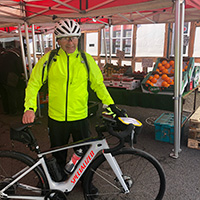 The Celtic Cycling Circle
The Celtic Cycling Circle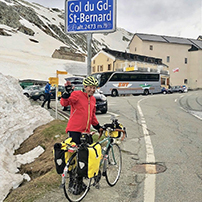 Cycling alongside the Grand Union Canal
Cycling alongside the Grand Union Canal 5 Essential Items to Take with You on Your First Cycling Tour
5 Essential Items to Take with You on Your First Cycling Tour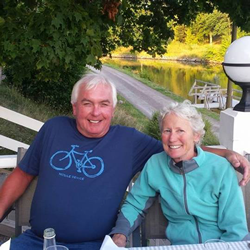 Favorite Cycling Destinations: Sardinia
Favorite Cycling Destinations: Sardinia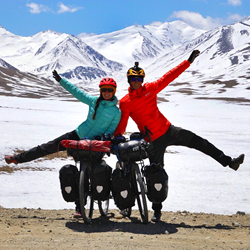 Pamir to Karakoram- cycling the highways on the roof of the world
Pamir to Karakoram- cycling the highways on the roof of the world 4 Wheels 2 Hearts 1 World - A Day in Our lives
4 Wheels 2 Hearts 1 World - A Day in Our lives Koga E-Worldtraveller - e-bike review
Koga E-Worldtraveller - e-bike review Ten tips for tandem cycle touring
Ten tips for tandem cycle touring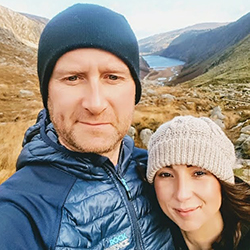 colmandsamstreks - Two Beginners in France
colmandsamstreks - Two Beginners in France

